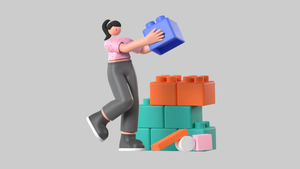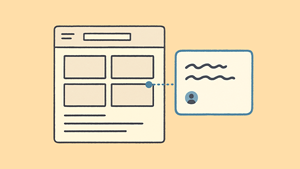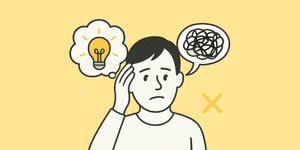Designers often receive unexpected design requests, from Slack messages and emails to casual conversations during a coffee run. These requests can come from anywhere and vary in volume and clarity depending on how you collaborate.
While it is tempting to jump right in, I hesitate to start any project without essential and fundamental details. Getting clear upfront saves time, avoids confusion, and reduces the need for rework.
Yet, the reality of “casual design requests” can make this challenging.
A successful outcome depends on mutual respect and shared responsibility, ensuring requesters put thoughtful intention behind their design requests.
At the same time, designers should actively ask the right questions to craft more effective briefs. When both sides collaborate, the process becomes smoother and more effective for everyone involved.
Getting in sync is the priority.
Before diving into the work, the requester and the designer must align on the problem. This shared understanding lays the foundation for success: what are we doing, for whom, and why? Without this, even the best-designed solutions can fall short.
Yet, achieving alignment isn’t always easy. Large organizations often use the “one-pager” brief—ironically, it is rarely just one page and hardly straightforward. These documents can take a long time to create, remain incomplete, or prescribe solutions rather than clarify problems. On the other hand, some requests arrive with no brief at all—just a verbal mention in a meeting with no supporting documentation.
A brief should clarify the problem, not dictate the solution.
We don’t need a lengthy document to start, but a foundational understanding of our goals is non-negotiable. A well-structured brief saves time and effort for everyone involved, creating a ripple effect that reduces ambiguity, minimizes unnecessary feedback loops, and enhances collaboration.
Introducing the “Tiny Brief”
To avoid these pitfalls, we need a brief structure that is both sufficient to ensure clarity and. lightweight enough to be practical. That’s where Tiny Brief comes in.
Tiny Brief is inspired by real-world scenarios where clarity is essential but time is limited. It isn’t about adding bureaucracy; it’s a lightweight tool that promotes clarity and collaboration. Unlike traditional briefs, which can be time-consuming to complete, Tiny Brief is quick, structured, and easy to use. It helps bring focus and alignment to your next design request so you can spend more time designing and less time deciphering.
How to use Tiny Brief
Using Tiny Brief is simple—copy and paste the questions into a document, a shared workspace, or a Slack message. You can also fill it out or ask the requester for details before starting a design request. Sharing it early in the process helps align expectations and prevents unnecessary back-and-forth.
The Tiny Brief
1 - Title/name of the project
- What’s the project called? Provide a short, clear name and 1-2 sentences on what it’s about.
2 - Who’s involved?
- Who is requesting this, and who needs to be involved in the process? Include key contributors and the final approver.
3 - Goals & impact
- What are we trying to achieve? How does design help make it happen?
4 - Why now?
- What triggered this request? What problem are we solving?
5 - Who is this for?
- Who will use this, and what do we know about their needs?
6 - Key actions & must-haves
- What needs to happen in this design? Any essential elements?
7 - Other considerations
- Are there any constraints, existing work, or dependencies?
8 - Timeline expectation
- What’s the expected timeframe or urgency?
The best design work begins with clarity.
A well-structured brief doesn’t need to be long or complicated—it just needs to help you align. The Tiny Brief helps designers and requesters get on the same page quickly, reducing friction and unnecessary iterations. By focusing on the right questions upfront, we create a smoother, more effective process that allows us to spend less time chasing details and more time solving the right problems.
Next time you receive a design request, try using the Tiny Brief. It’s a small step that can make a big difference.





